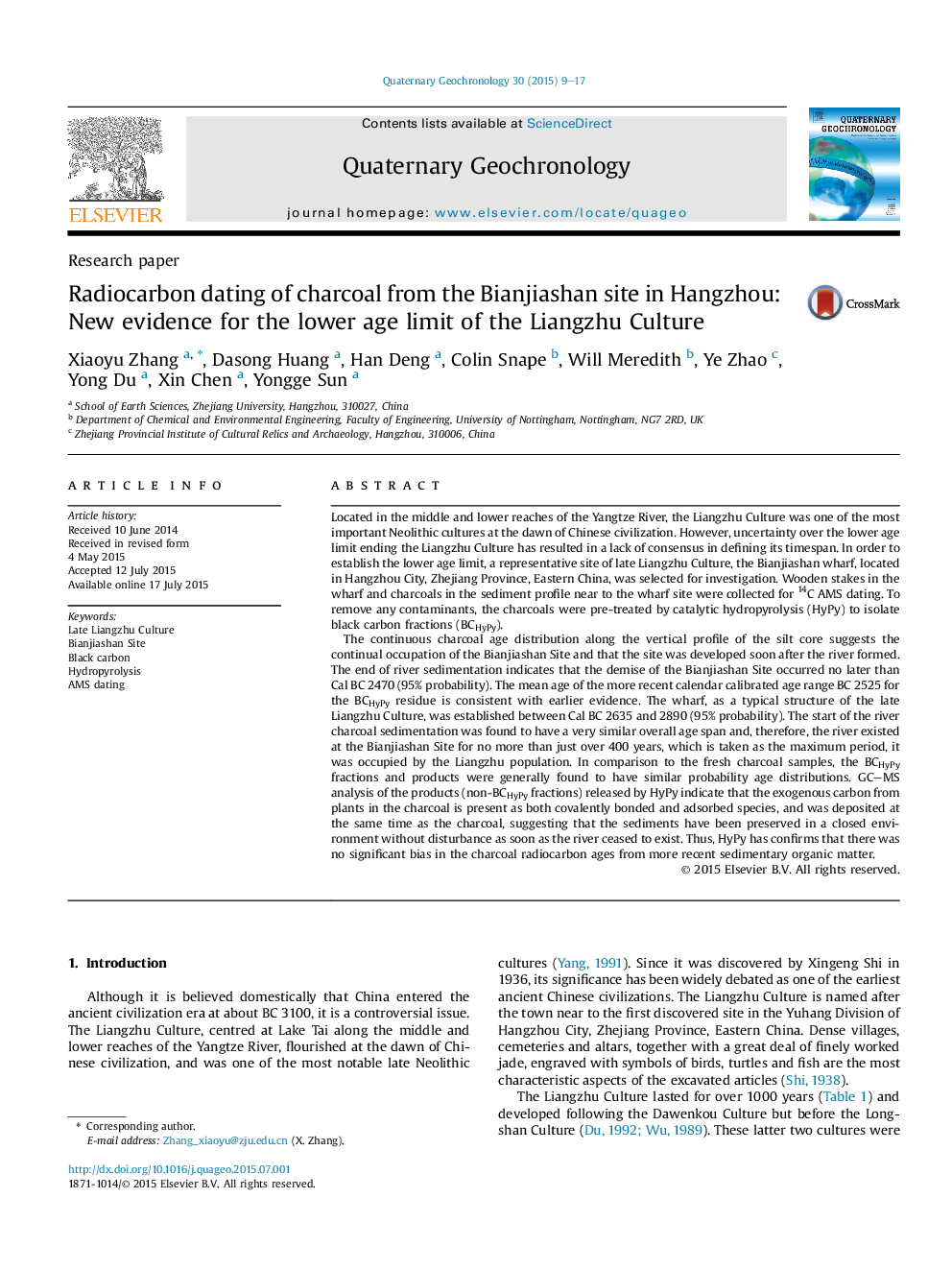| Article ID | Journal | Published Year | Pages | File Type |
|---|---|---|---|---|
| 6442647 | Quaternary Geochronology | 2015 | 9 Pages |
Abstract
The continuous charcoal age distribution along the vertical profile of the silt core suggests the continual occupation of the Bianjiashan Site and that the site was developed soon after the river formed. The end of river sedimentation indicates that the demise of the Bianjiashan Site occurred no later than Cal BC 2470 (95% probability). The mean age of the more recent calendar calibrated age range BC 2525 for the BCHyPy residue is consistent with earlier evidence. The wharf, as a typical structure of the late Liangzhu Culture, was established between Cal BC 2635 and 2890 (95% probability). The start of the river charcoal sedimentation was found to have a very similar overall age span and, therefore, the river existed at the Bianjiashan Site for no more than just over 400 years, which is taken as the maximum period, it was occupied by the Liangzhu population. In comparison to the fresh charcoal samples, the BCHyPy fractions and products were generally found to have similar probability age distributions. GC-MS analysis of the products (non-BCHyPy fractions) released by HyPy indicate that the exogenous carbon from plants in the charcoal is present as both covalently bonded and adsorbed species, and was deposited at the same time as the charcoal, suggesting that the sediments have been preserved in a closed environment without disturbance as soon as the river ceased to exist. Thus, HyPy has confirms that there was no significant bias in the charcoal radiocarbon ages from more recent sedimentary organic matter.
Keywords
Related Topics
Physical Sciences and Engineering
Earth and Planetary Sciences
Geochemistry and Petrology
Authors
Xiaoyu Zhang, Dasong Huang, Han Deng, Colin Snape, Will Meredith, Ye Zhao, Yong Du, Xin Chen, Yongge Sun,
